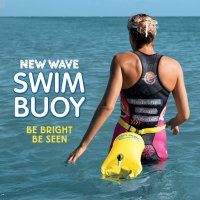I didn’t use a swim snorkel until my sophomore year in college, and the first time I used it, I hated it. I felt like I was going to drown; I choked on water countless times until I figured out how to use it, which took about 3 practices. After that, I LOVED it because it added a whole new dimension to my training. After using a snorkel for over 10 years, here are the five best reasons for putting a swim snorkel into your swim bag.
1. To Make the kick-sets much easier.
I know a lot people don’t like slugging through the water, holding on to a kickboard, with their legs feeling like they’re on fire; and having to lift your head to breathe makes the process even less comfortable. The snorkel allows you to relax your neck and to rest your head under the water while your legs motor away. Your body position will improve instantly, and you’ll feel so much more relaxed in your upper body. The integration of a snorkel into my kick sets was the #1 reason I went from one of the slowest kickers on the GA Tech team to one of the fastest.
2. To make Tough Drills Easier.
There are drills that we do that make breathing difficult - for example: catch-up, sculling, and one-arm drill. The point of these drills is not to make breathing hard, but each of these drills are intended to improve a certain part of your stroke. The snorkel removes this breathing difficulty, and allows you to focus on what the drill is supposed to do rather than how you’re going to take your next breath.
3. Identify Issues in Your Breathing Pattern
If you put the snorkel on and start to swim significantly faster at the same intensity, it probably means you have a breathing deficiency. Either you don’t take full breaths in when your head is turned, or you pause for too long on your side when you breathe, or your arm position isn’t correct when you roll to breathe. Any of these problems will slow you down noticeably. However, none of these breathing issues should be present when using a snorkel, so if you do speed up significantly, it lets you know you probably have one of these breathing deficiencies.
4. Learn to Swim Straight in Open Water
Try swimming with the snorkel with your eyes closed, and see how straight you swim. Eight to twelve strokes in a pool should be enough to see if you tend to drift left or right. Hopefully, you swam pretty straight. Now, take the snorkel off, and perform the exercise again. Did you drift left or right more this time? This test lets you know if a part of the reason for your drifting is caused by your breathing. You could do this same drill without breathing or using the snorkel, however, the snorkel will allow you to perform this check in the middle of a hard set while breathing.
5. Strengthen your breathing muscles.
Your diaphragm is the biggest muscle you use for breathing, but the intercostal muscles are the tiny muscles between each rib, and when they contract, they expand the volume of the rib cage and fill your lungs with air. When you breathe with the snorkel, you can take as long as you want to inhale and really fill your lungs with air. When you take a deep breath, you will notice that works your diaphragm and intercostal muscles a little harder than when you take a normal breath. If you take enough big breaths in this way, your breathing muscles will get stronger. You’ll probably pick up a little lung capacity as well. You can further enhance this with a “cardio cap” that fits on top of the snorkel and restricts breathing just a little bit more. That might sound like pure torture to you, but remember that the snorkel lets you breathe whenever you want. Because you can take as long as you want to get those breaths, I’ve never felt like I was suffocating.
Since I got a snorkel over a decade ago, I can’t image doing a kick set or a tough drill set without it. I like to put it on for long, steady sets of swimming at tempo pace, so I can really pay attention to my stroke and how differently it feels when I don’t have to turn my head to breathe. I used a cardio cap 100% of the time, and I got used to it. The snorkel may be the second bulkiest item in my swim bag behind my fins, but it has absolutely earned its place.
